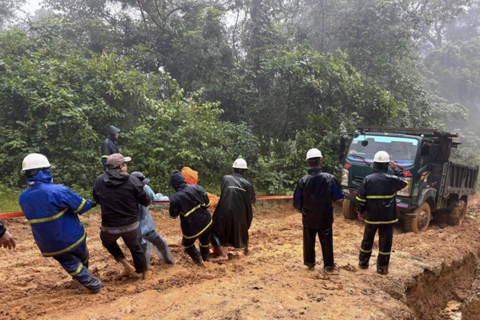Hanoi takes steps towards green transport development
The use of environmentally friendly vehicles makes a significant contribution to environmental protection.
Hanoi is striving to develop a green transportation system and lead the country in greening public transport, according to the city's Department of Transport.
The department cited the Ministry of Transport as saying that green transportation is the use of modes of transportation that reduce their carbon footprint and other pollutants that harm the environment. It means the use of human power, renewable energy, electricity, and compressed natural gas (CNG), such as bicycles, motorcycles, electric cars, and CNG-powered vehicles; vehicles powered by solar energy and wind energy.
"Green energy vehicles are an inevitable trend in the world, including big cities like Hanoi. Hanoi currently has 132 subsidized bus lines with more than 2,000 buses, including 277 electric and clean CNG vehicles, accounting for 13.6% of the fleet. Hanoi has also licensed thousands of electric taxis, public bicycles, and electric bicycles for people's mobility in some downtown districts," said the department.
In addition, Hanoi's first metro line, which was commissioned in 2021, has helped ease traffic congestion with its large passenger capacity. Hanoi's second metro line is expected to begin commercial operation in July.
Electric bus line No.03 in Hanoi. Photo: Pham Hung/The Hanoi Times |
Although there are still many challenges, Hanoi is on the right track to introduce green public transport. The use of green vehicles contributes to environmental protection and creates a strong attraction for people to gradually leave their private vehicles, the department stressed.
According to the Hanoi Public Transport Management Center, the city's bus network has grown in both performance and revenue. Specifically, in the first five months of 2024, the bus network transported nearly 170 million passengers, with total revenue estimated at VND237 billion (US$9.3 million), an increase of 3.1% year-on-year.
Over the past five months, Hanoi's first metro line, Cat Linh - Ha Dong, has transported about 4.6 million passengers, an increase of 7.3%, and generated total revenue estimated at VND30.9 billion ($1.2 million), up 1.2% over the same period in 2023.
The center added that five new bus lines will prioritize the use of clean energy vehicles and electric buses in early 2025.
Duong Xuan Hien, a resident of Dong Da District, talked to The Hanoi Times: "I have been taking the Hanoi Skytrain from Cat Linh to Ha Dong to work for almost two years. Traveling on the rapid transit system is much more convenient, economical, time-saving, and safer than using private vehicles. Public buses, taxis, and electric bicycles are well synchronized in a network, creating convenience for users. Types of public transportation that use clean fuel contribute to the formation of a "green transportation ecosystem".
Hanoi needs a specific and detailed roadmap and policy, both in terms of raising people's awareness and building infrastructure, to develop green transport.
The Action Program on Green Energy Conversion and Reduction of Carbon and Methane Emissions from the Transport Sector was approved by the Government of Vietnam on July 22, 2022. The program aims to develop a green transportation system and achieve net-zero greenhouse gas emissions by 2050.
For Hanoi, the program has set out a specific roadmap: in the period 2025 - 2030, all new buses must use green energy, and the market share of public transport in Hanoi must reach 45 - 50%. By 2030, the proportion of vehicles using electricity and green energy will reach at least 50%. By 2050, 100% of buses and taxis will use electricity or green energy.
"The roadmap for the gradual replacement of clean buses is well prepared and helps companies not to be passive. In the next 30 years, the government and localities need to invest heavily and comprehensively, especially in the infrastructure to supply energy and fuel for green buses. The city must ensure power supply and locations to build CNG storage and supply stations so that enterprises can widely use electric buses or CNG vehicles," urban management expert Phan Truong Thanh told The Hanoi Times.
In addition, appropriate mechanisms and policies are needed to expand the fleet of green energy buses, which are much more expensive than gasoline and diesel vehicles.
"At the same time, it is necessary to take measures to curb private vehicles and direct people to use public transport to ensure economic efficiency and minimize obstacles for public transport on the road. Agencies and businesses in Hanoi must take the lead in the movement to abandon gasoline vehicles and use bicycles, electric buses, skytrains, electric motorcycles, and cars," Thanh stressed.











